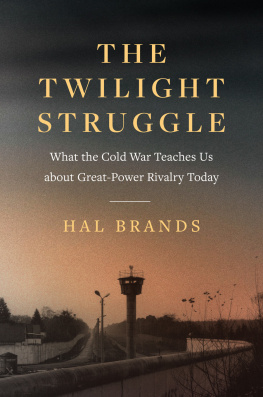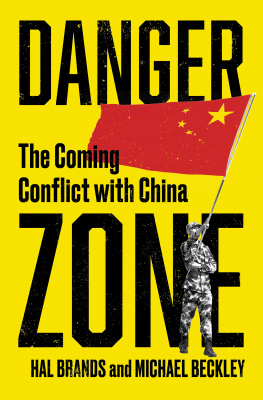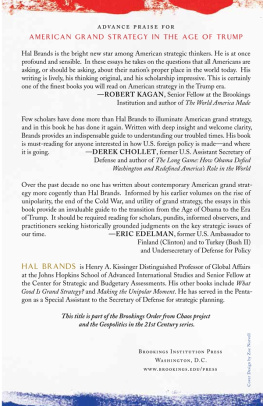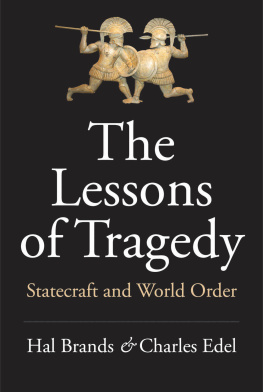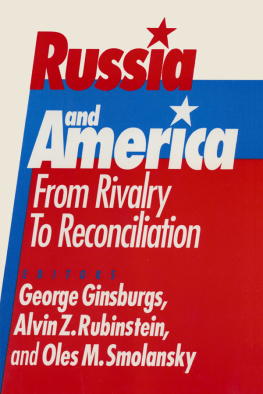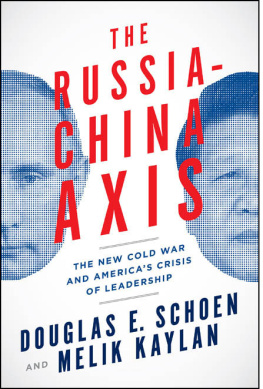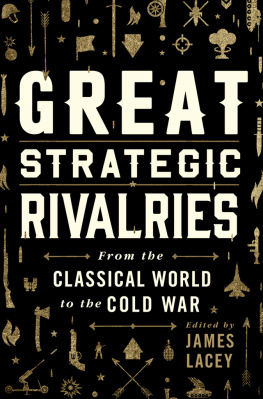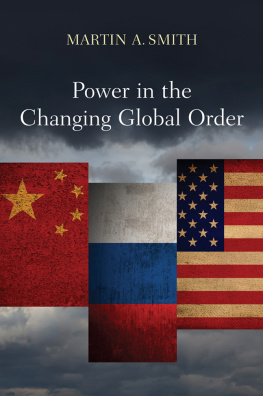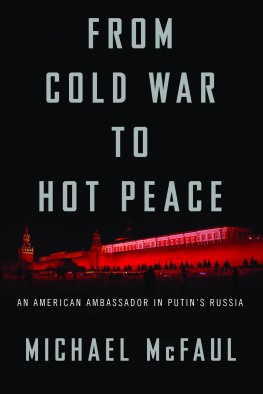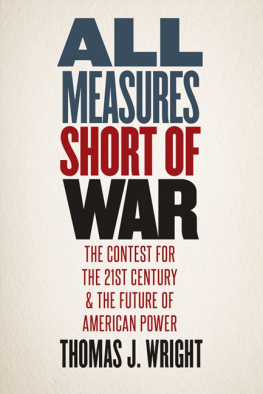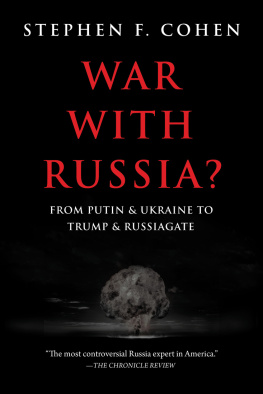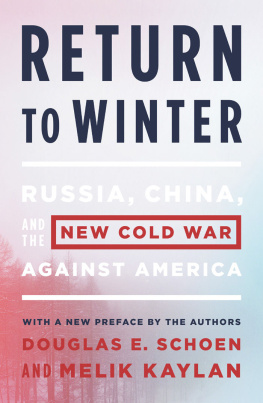THE TWILIGHT STRUGGLE

Published with assistance from the income of the Frederick John Kingsbury Memorial Fund and with assistance from the foundation established in memory of Philip Hamilton McMillan of the Class of 1894, Yale College.
Copyright 2022 by Hal Brands.
All rights reserved.
This book may not be reproduced, in whole or in part, including illustrations, in any form (beyond that copying permitted by Sections 107 and 108 of the U.S. Copyright Law and except by reviewers for the public press), without written permission from the publishers.
Yale University Press books may be purchased in quantity for educational, business, or promotional use. For information, please e-mail (U.K. office).
Set in Janson type by IDS Infotech Ltd., Chandigarh, India.
Printed in the United States of America.
Library of Congress Control Number: 2021935428
ISBN 978-0-300-25078-7 (hardcover : alk. paper)
A catalogue record for this book is available from the British Library.
This paper meets the requirements of ANSI/NISO Z39.48-1992 (Permanence of Paper).
10 9 8 7 6 5 4 3 2 1
For Emily, Henry, Annabelle, and Dolly
Contents
Acknowledgments
I AM DEEPLY GRATEFUL to the Smith Richardson Foundation for helping me conceive and generously supporting this book; Johns Hopkins University and the American Enterprise Institute for giving me intellectual homes while writing it; and Yale University Press for publishing it. I also thank James Baker, Seth Center, Jaya Chatterjee, Tarun Chhabra, Robert Doar, Eric Edelman, Frank Gavin, Chris Griffin, Toby Harshaw, Seth Jones, Robert Kagan, Tom Mahnken, John Maurer, Andrew May, Mira Rapp-Hooper, Rafe Sagalyn, Mary Sarotte, Kori Schake, David Shipley, James Wilson, and Toshi Yoshihara. Finally, I owe a great debt to those scholars whose work I learned from while writing this bookand a heartfelt apology to those whose work space constraints precluded me from citing.
INTRODUCTION
Twilight Struggles, Then and Now
G REAT-POWER COMPETITIONPROLONGED , dangerous, even deadly geopolitical rivalryis more normal than we think. From antiquity to the present, nations have vied for influence and advantage. Athens and Sparta clashed for dominance of the Greek world. The United Kingdom played its great game against Russia during the nineteenth century. America and the Soviet Union locked horns during the Cold War.
These contests have often been smoldering long-term rivalries punctuated by war or the threat of war. They have typically blended geopolitical and ideological conflict, involving the balance of ideas as much as the balance of power. And these struggles are so intense because the consequences are so profound. From the Peloponnesian War to the Cold War, great-power rivalry has shaped world order.
Today, America is facing new twilight struggleshigh-stakes, long-term competitions against China and Russia. So far, these competitions are occurring in the no-mans-land between peace and war, although the danger of military conflict is growing. They represent fierce geopolitical struggles over power and influence, but also deeply ideological conflicts between authoritarianism and democracy. These competitions will determine whether the twenty-first century extends the relatively peaceful, prosperous world to which Americans have become accustomed or thrusts us back to a darker past. They will influence the fate of freedom in countries around the globe.
Many books have been written about how America should wage great-power competition in the coming decades. This one is different. Here, I seek insight about the future by examining the past. Protracted rivalry against powerful authoritarian countries feels unfamiliar to Americans after the generation of great-power peace that followed the Cold War. But long-term competition seems new only because it is very old. Rediscovering the lost art of long-term competition requires only that we reacquaint ourselves with history.
During the Cold War, competition was a way of life. For 45 years, U.S. officials grappled with a dangerous adversary in the ambiguous space between peace and war. They devised generational strategies while responding to crises and surprises. They racked up impressive achievements and committed grievous errors. Ultimately, they defeated a powerful adversary peacefully, decisively, and without disfiguring their own nation beyond recognition.
History never repeats itself precisely. Americas current struggles are not exact replicas of the Cold War. It is a serious mistake, moreover, to think that Americas Cold War strategy was wholly successful. The road to victory was littered with failures and higher-than-expected costs.
But examined properly, the Cold War offers insights about long-term rivalry and about Americas strengths and weaknesses in such a contest. In 1947, Secretary of State George Marshall said that no man can think with full wisdom and with deep convictions about the Cold War who has not at least reviewed in his mind the period of the Peloponnesian War and the fall of Athens. The United States needs this same historical sensibility today. To prepare for new twilight struggles, we must reexamine how America waged an earlier twilight struggle. Winning the contest for the worlds future will require learning from our past.
That this contest is under way is undeniable, even if some American officials were, not so long ago, trying to deny it.
It wasnt supposed to be this way. The Cold War ended with the geopolitical triumph of the West and the ideological triumph of democracy. After the Cold War, U.S. strategy sought to make these victories permanent. Multiple presidents promoted democracy and free markets overseas. They expanded Americas global presence to prevent resurgent instability. Most important, they worked to discourage potential rivals from upsetting the postCold War order through a mixture of military deterrence and economic integration. In short, Washington aimed to relegate great-power rivalry to history by keeping prospective challengers in check until they were pacified by globalization and liberalization.
This strategy deserves more credit than it often gets. By remaining deeply engaged after the Cold War, instead of retreating across the oceans as it had done after World War I, America provided insurance against a rapid reversion to vicious global anarchy. U.S. promotion of democracy and globalization made the world richer and more humane. If the decades since 1945 have been a time of unprecedented peace and prosperity, it is principally because America worked to make it so after World War II and then persisted after the Cold War. Alas, the idea that great-power rivalry itself could be vanquished went wanting, for three reasons.
The first was a failure of integration. U.S. officials hoped that China and Russia would become responsible stakeholders in an American-led world. But authoritarian leaders had other ideas. Unwilling to sign their political death warrants, they fortified their systems against liberalization (China) or rolled back reforms that had occurred in the 1990s (Russia). Once prospects for democratization faded, authoritarian regimes committed to suppressing liberalism at home were sure to feel threatened in a world where a democratic superpower reigned supreme.
In fact, Russian and Chinese leaders saw U.S. policy not as a source of stability but as a threat to their security and power. Washington was not wrong to expand the North Atlantic Treaty Organization (NATO) into Eastern Europe, give Taiwan shelter against Chinese coercion, and prevent Moscow and Beijing from dominating their surroundings as great powers have long done. But Russia and China resented a hegemonic America imposing its will in their backyards and thwarting their geopolitical designs.
Next page
